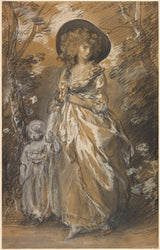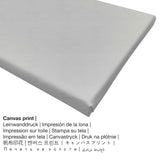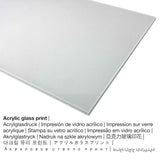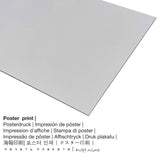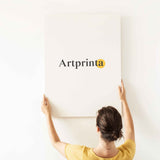Thomas Gainsborough, 1785 - Nwanyị nwanyị na-eje ije n'ime ubi nwere nwa - mbipụta nka mara mma
Ụtụ gụnyere. Mbupu gbakọrọ na ndenye ọpụpụ.
A Lady Walking in a Garden with a Child bụ ihe osise nke nwoke na-ese British artist Thomas Gainsborough in 1785. Ihe osise ahụ nwere nha ndị a: 50,8 x 22,1 cm. Black chalk with stumping and heightened with white pastel was applied by the painter as the medium of the artwork. Today, the artpiece can be viewed in in the The J. Paul Getty Museum's collection, which is part of the J. Paul Getty trust and is one of the world's largest arts organizations worldwide. It seeks to inspire curiosity about, and enjoyment and understanding of, the visual arts by collecting, conserving, exhibiting, and interpreting works of art of outstanding quality and historical importance.. This artpiece, which is part of the ngalaba ọha a na-enye ya, site n'ikike nke Ụlọ ihe ngosi nka nke J. Paul Getty.Ebe E Si Nweta nke ihe osise:. N'elu nke ahụ, nhazi nke mmepụta dijitalụ na-abanye Eserese format na a akụkụ ruru nke 2: 3, which means that the length is 33% shorter than the width. Thomas Gainsborough was a male painter of British nationality, whose style can be attributed primarily to Rococo. The artist was born in the year 1727 na Sudbury, Suffolk, England, United Kingdom wee nwụọ mgbe ọ dị afọ 61 na 1788.
Supplemental information from the museum's website (© Copyright - by The J. Paul Getty Museum - www.getty.edu)
Although their identity is unknown, the lady and child strolling through a park are probably portraits of specific members of English high society. The woman wears a large picture hat, and her hair flows in loose ringlets over her shoulder, a hairstyle very much in vogue in England between 1785 and 1790. Sweeps of black chalk with fresh white heightening suggest the lightness of the woman's step and the sense of breeze blowing through her skirts and gently agitating the surrounding foliage.
Thomas Gainsborough probably made this drawing as a study for The Richmond Water-Walk, a painting commissioned by King George III of England that was apparently never executed. The painting was to feature stylish ladies of the day promenading along the banks of the River Thames in London. To prepare for the painting, Gainsborough made sketching trips to St. James's Park near his London home to draw the "high-dressed and fashionable ladies" he saw there. This drawing was very likely made on such a trip.
Nkọwa nka ahaziri
| Akụkụ nka: | "A Lady Walking in a Garden with a Child" |
| Nhazi nka: | sere |
| Otu izugbe: | nka ochie |
| oge: | 18th narị afọ |
| Emepụtara n'afọ: | 1785 |
| Afọ nka: | karịa afọ 230 |
| Usoro izizi: | black chalk with stumping and heightened with white pastel |
| Akụkụ nke ọrụ nka mbụ: | 50,8 x 22,1 cm |
| Egosiputara na: | Ụlọ ihe ngosi nka nke J. Paul Getty |
| Ebe ebe ngosi nka: | Los Angeles, California, Njikota Obodo Amerika |
| URL webụ: | www.getty.edu |
| Licensedị ikike: | ngalaba ọha |
| Site n'aka: | Ụlọ ihe ngosi nka nke J. Paul Getty |
Nkọwa onye nka
| aha: | Thomas Gainsborough |
| Aha ndi ozo: | Mr. Gainsborough, Gainsboroagh, Gainsboro Thomas, Gainsbro', Gainsborouh, thos. gainsborough, Gainsbrough, gainsborough thomas, Thomas Gainsbro, T Gainsborough RA, T. Gainsbro, Gainsboro, Gainsboro', gainsborough t., Gainsborough &, Gainsborough, th. gainsborough, Thomas Gainsborough, Gainsbury, c., Gainsbro, Geĭnsboro Tomas, Gainsborough Thomas, Gainsbro Thomas, T. Gainsborough, Geĭnzbŭro Tomas |
| Gender: | nwoke |
| Nationality: | British |
| Ọrụ nke onye na-ese ihe: | onye na-ese ihe |
| Obodo onye nka: | United Kingdom |
| nhazi ọkwa: | nna ukwu ochie |
| Ụdị nke onye na-ese ihe: | Rococo |
| Akwụsị: | 61 afọ |
| Afọ ọmụmụ: | 1727 |
| Obodo: | Sudbury, Suffolk, England, United Kingdom |
| Afọ ọnwụ: | 1788 |
| Nwuru na (ebe): | London, Greater London, England, United Kingdom |
Nhọrọ ihe dị
Maka ngwaahịa ọ bụla anyị na-enye ihe dị iche iche na nha. Ị nwere ike ịhọrọ nha na ihe kachasị amasị gị n'ime nhọrọ ndị a:
- Mbipụta iko acrylic (nke nwere ezigbo mkpuchi iko n'elu): A glossy acrylic glass print, which is often denoted as a print on plexiglass, will transform the original into brilliant décor. Your own version of the artwork will be made with state-of-the-art UV direct printing machines. It creates rich and deep colors. The major benefit of an acrylic glass print is that sharp contrasts plus artwork details will be more exposed because of the granular tonal gradation in the print. The plexiglass protects your chosen art print against light and heat for many years to come.
- Mbipụta akwụkwọ mmado (akwa akwa akwa): The poster print is a UV printed sheet of canvas with a slight surface finish, which reminds the original version of the artwork. Please note, that depending on the size of the poster print we add a white margin between 2-6cm around the print in order to facilitate the framing with a custom frame.
- Mbipụta kanvas: The canvas print, which shall not be mistaken with an artwork painted on a canvas, is an image applied onto cotton canvas fabric. A canvas print produces a cosy, enjoyable ambience. The great advantage of canvas prints is that they are relatively low in weight, meaning that it is easy and straightforward to hang the Canvas print without extra wall-mounts. Because of thatcanvas prints are suitable for all kinds of walls in your house.
- Mbipụta aluminom (aluminium dibbond): Aluminium Dibond prints are prints on metal with an impressive depth. Its non-reflective surface creates a modern look. For our Direct Aluminium Dibond option, we print the chosen work of art on the aluminium composite white-primed surface. Colors are luminous and bright, the fine details are clear and crisp, and the print has a a matte look that you can literally feel.
Product ọmụma
| Nkewa bipụta: | ọrụ mgbidi |
| Mmeputakwa: | dijitalụ mmeputakwa |
| Usoro mmepụta: | Mbipụta UV ozugbo (mbipụta dijitalụ) |
| Ihe ngosi: | Germany |
| Ụdị ngwaahịa: | mmepụta ihe na-achọ |
| Eji ngwaahịa a chọrọ: | ihe ndozi mgbidi, ime ụlọ |
| Ndepụta: | nhazi ihe osise |
| Ụdị anya: | 2: 3 ogologo: obosara |
| Nkọwa nha onyonyo: | ogologo bụ 33% mkpụmkpụ karịa obosara |
| Akwa mmeputakwa dị: | Mpempe akwụkwọ mmado (akwụkwọ kwaaji), mbipụta kanvas, mbipụta ọla (aluminium dibond), mbipụta iko acrylic (nwere ezigbo mkpuchi iko) |
| Mbipụta kanvas (akwa akwa na etiti ihe ndọtị): | 20x30cm - 8x12", 40x60cm - 16x24", 60x90cm - 24x35", 80x120cm - 31x47", 100x150cm - 39x59" |
| Mbipụta iko acrylic (nke nwere ezigbo mkpuchi iko): | 20x30cm - 8x12", 40x60cm - 16x24", 60x90cm - 24x35", 80x120cm - 31x47", 100x150cm - 39x59" |
| Mbipụta akwụkwọ mmado (akwụkwọ kwaaji): | 40x60cm - 16x24", 60x90cm - 24x35", 80x120cm - 31x47" |
| Mbipụta aluminom (ihe alumini debond ihe): | 20x30cm - 8x12", 40x60cm - 16x24", 60x90cm - 24x35", 80x120cm - 31x47" |
| Nhazi mbipụta nka: | adịghị |
Ederede iwu: We try to describe our products as accurately as possible and to showcase them visually in our shop. Although, the tone of the print products and the imprint may vary slightly from the representation on the device's screen. Depending on your screen settings and the quality of the surface, not all color pigments are printed as exactly as the digital version on this website. Because all the fine art prints are printed and processed manually, there might also be slight discrepancies in the motif's size and exact position.
© echebe nwebiisinka - Artprinta.com (Artprinta)

